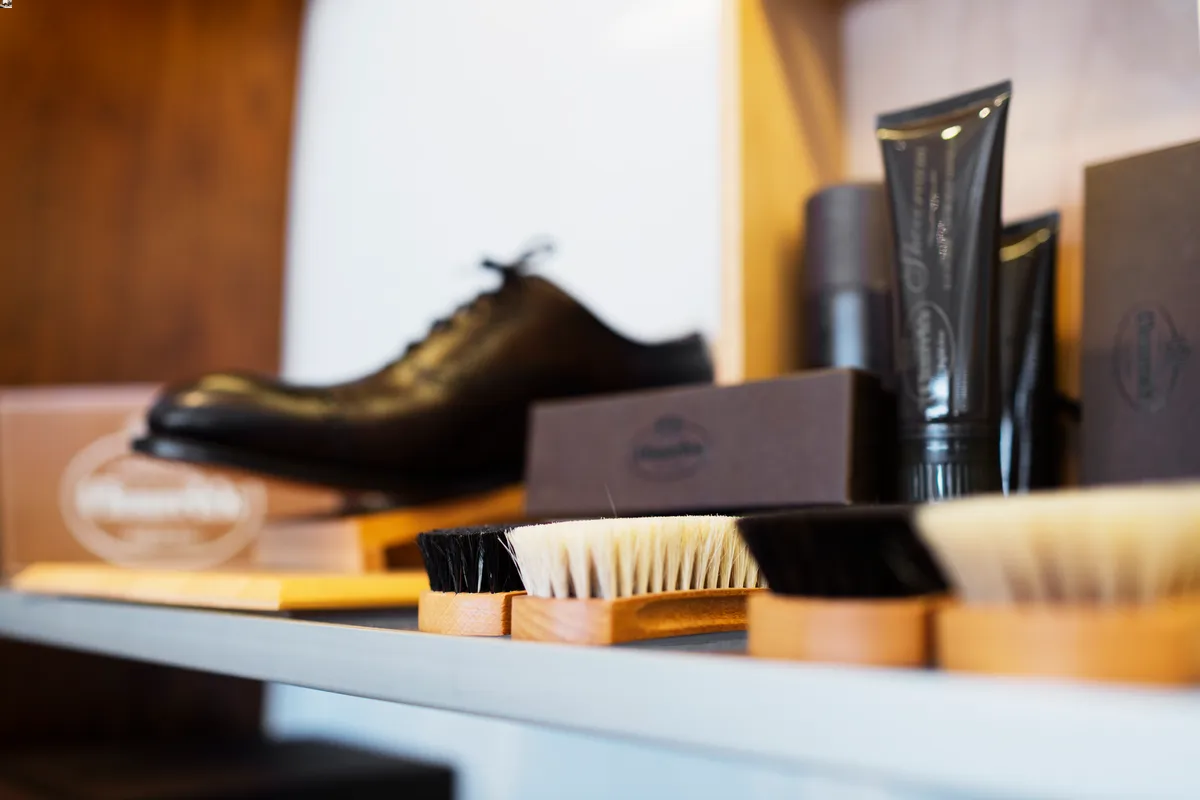
The Lowdown on Lace Holes: Why Bother Fixing?
Shoe laces, often taken for granted, are fundamental to both the fit of our footwear and its aesthetic appeal. Securely fastened laces can mean the difference between a snug, comfortable fit and a precarious, loose shoe that’s liable to slip off. Furthermore, well-maintained shoes with intact laces enhance the overall look and longevity of your footwear. Yet, the reality of wear and tear spares no one, with shoe lace holes eventually fraying and breaking. It’s a common misconception that such minor damage necessitates a new pair of shoes, but in truth, repairing lace holes can restore both functionality and form.
Besides the apparent cost-saving benefits, fixing lace holes also allows you to maintain your favorite shoes in prime condition. The process is straightforward and requires only a handful of common tools. The satisfaction of DIY repair further underscores the worth of this endeavor. With each mend, you not only salvage your shoes but also reinforce the resilience of your laces against future damage.
Gear Up for Repair: Assemble Your DIY Kit
Repairing shoe lace holes is an easy fix that requires a minimal investment in tools. A DIY approach can save your footwear from an untimely demise. To begin, gather the essentials: a flexible, waterproof adhesive like Shoe Goo, scissors for trimming away frayed edges, and a toothpick or other fine point tool to carefully apply the adhesive. Shoe Goo is particularly preferred for this task due to its strong bond and compatibility with various surfaces — key qualities for reinforcing shoe lace holes.
While a toothpick is commonly used for precision in applying Shoe Goo, don’t fret if one isn’t at hand. Practical alternatives include a clean bobby pin or a small artist’s brush, which can also efficiently spread the adhesive without causing a mess. The goal is to have a tool that allows you to work with precision and control, so the repair is clean and effective.
Prepping the Battlefield: Cleaning and Trimming
A successful repair job starts with a clean slate. Begin by thoroughly cleaning lace holes to ensure the adhesive will bond correctly. Brush off any dirt or debris, and consider using a gentle cleaning solution if necessary. Once the area is dry and free of dirt, inspect the lace holes for fraying. Trimming these frayed areas is crucial, as excessive fray could prevent the adhesive from holding effectively. However, be cautious not to shorten the laces more than necessary — it’s a balancing act between removing damaged material and maintaining lace length.

Taking the time to properly prepare your lace holes can significantly increase the likelihood of a durable repair. This initial step, though often overlooked, can dramatically influence the long-term success of your shoe maintenance. Remember, a well-prepped shoe ensures a seamless mend, minimizing the chances of repeat damage in the same area.
The Art of Adhesion: Applying Your Shoe Goo
With your Shoe Goo at the ready, it’s time to master the art of adhesion. Using the toothpick — or your chosen fine point tool — carefully apply a small amount of adhesive onto the frayed lace holes. Guiding the toothpick precisely allows the Shoe Goo to penetrate the affected area, creating a strong bond without overflowing. The key is to use just enough adhesive to cover the hole without it becoming messy or cumbersome to work with.
Bear in mind that while it might be tempting to slather on a generous amount of Shoe Goo to ensure a solid fix, restraint is critical. Too much adhesive can lead to a sloppy finish and may impact the flexibility of the lace hole, hindering the overall outcome. Patience and precision during this step will pay off, ensuring a clean and professional-level repair.
Patience Is a Virtue: The Drying Game
With the adhesive applied, your job now is to simply wait. Allowing the Shoe Goo to dry for a full 24-hour period is essential for the repair to set and hold effectively. It’s equally important to resist the temptation to expedite this process, as doing so may weaken the bond you’ve carefully created.
If, after the drying time has passed, you find that the repair isn’t as robust as desired, a second application may be warranted. Apply a new layer of adhesive, following the same careful method used initially, and again wait the full 24 hours. It often takes patience and sometimes multiple attempts to ensure a lasting repair, but the effort will extend the life of your laces significantly.
Speed Up the Process: Quick-Dry Tactics
While the Shoe Goo manufacturer recommends a full 24-hour cure time, if you’re in a pinch, there are ways to speed up the drying process. Using a hair dryer or heat gun on a low setting can help accelerate the curing of the adhesive, thus reducing the wait time. However, caution should be exercised to avoid using too much heat, which can compromise the glue’s effectiveness.
It’s essential to keep the heat source moving and not to focus it too intensely on any single spot. High temperatures can cause the adhesive to dry too quickly on the outside while remaining unset on the inside, leading to a weak repair. When used judiciously, these quick-dry tactics can be a valuable time-saver, allowing you to get back on your feet with minimal delay.
Prevention Is Better Than Cure: Lace Hole Care
In the realm of shoelace maintenance, prevention is undoubtedly better than cure. Employing proper lacing techniques, such as not pulling the laces too tightly or ensuring they are evenly tensioned, can extend the life of lace holes. Investing in high-quality laces made from durable materials, like nylon or polyester, can also prevent premature wear and tear, sparing you from frequent repairs. Regular rotation of your shoes not only contributes to better foot hygiene but also avoids consistent stress on any single pair, thereby prolonging their overall lifespan.
Consistent care and mindful usage can significantly reduce the likelihood of lace holes requiring repair. A diligent approach to shoe maintenance will save both time and money in the long run and keep your beloved kicks in serviceable condition far longer.

Conclusion: Lace-Up Like a Pro and Keep Your Kicks Kicking
To summarize, with the right tools and a little patience, learning how to fix shoe lace holes is a straightforward process that will keep your footwear functional and fashionable. The DIY repair kit you’ve assembled, along with a meticulous approach to cleaning, applying adhesive, and respecting drying times, will ensure successful maintenance of your shoes. Remember, taking a proactive stance on shoe care not only enhances their longevity but also ensures a comfortable, secure fit. Lace-up like a pro and give your favorite shoes a new lease on life!
Embrace Your Inner Cobbler: You Got This!
Embarking on the journey of at-home shoe repair can be a rewarding endeavor, fostering a sense of accomplishment and independence. You’re not just fixing a small hole; you’re upcycling your shoes, contributing to a more sustainable lifestyle, and saving money in the process. Shoe lace hole repair is a prime example of a simple fix that can be done by anyone willing to invest a little effort. So next time you spot a frayed lace or a worn-out eyelet, remember that with your new-found skills and this guide at your fingertips, you’ve got what it takes to fix it. Be the cobbler of your own life — embrace your resourcefulness and keep your shoes in step for the long haul!
Frequently asked questions
What are the tools needed to fix shoe lace holes?
You will need Shoe Goo, scissors, and a toothpick to fix shoe lace holes. Shoe Goo is a high-quality adhesive that is perfect for fixing shoe lace holes. Scissors are needed to trim any excess lace material, and a toothpick is used to apply the Shoe Goo more accurately.
How do you fix shoe lace holes?
First, clean the holes where the laces go through. Trim any frayed or excess lace material using scissors. Apply a small amount of Shoe Goo to the lace hole using a toothpick, making sure to cover the entire surface. Let the glue dry for at least 24 hours. Test your laces to make sure they are securely in place. If they are still loose, you may need to apply another layer of Shoe Goo and let it dry again.
How can you prevent shoe lace holes?
You can prevent shoe lace holes by using proper lacing technique. Avoid yanking on the laces too hard and lace them up firmly but gently. Invest in high-quality laces made of durable materials like nylon or polyester. Rotate your shoes regularly to prevent putting too much strain on one pair of laces.
Can you use a bobby pin to apply Shoe Goo?
Yes, if you don’t have a toothpick, you can use a bobby pin to apply the Shoe Goo to the lace holes.
How can you speed up the drying process of Shoe Goo?
You can speed up the drying process of Shoe Goo by applying heat using a hair dryer or a heat gun. Be careful not to overheat the glue, as it can cause it to lose its adhesion.

Patricia Merken
Interior design blogger
Neat freak and shoe lover. American expat in Switzerland.
Blogger and mom. Blogs at Footweardrobe.


















































![Best shoe wipes and cleaners, for leather, sneakers, crep protect [2023]](https://www.footweardrobe.com/wp-content/uploads/best-shoe-wipes.jpg)





































![Best Shoe Dryer and Boot Dryer, Warmer, Deodorizer [2023]](https://www.footweardrobe.com/wp-content/uploads/Best-Shoe-Dryer-and-Boot-Dryer-Warmer-Deodorizer.webp)
![Best Shoe Shine Valet Box for Men and Women [2023 Reviews]](https://www.footweardrobe.com/wp-content/uploads/shining-shoes.webp)
![Best Leather Conditioner for Shoes and Boots [2023 Reviews]](https://www.footweardrobe.com/wp-content/uploads/best-leather-conditioner-for-boots-and-shoes.webp)

![Best Shoe Trees: 8 top cedar and plastic picks [2023 Reviews]](https://www.footweardrobe.com/wp-content/uploads/Best-Shoe-Trees-reviewed.webp)